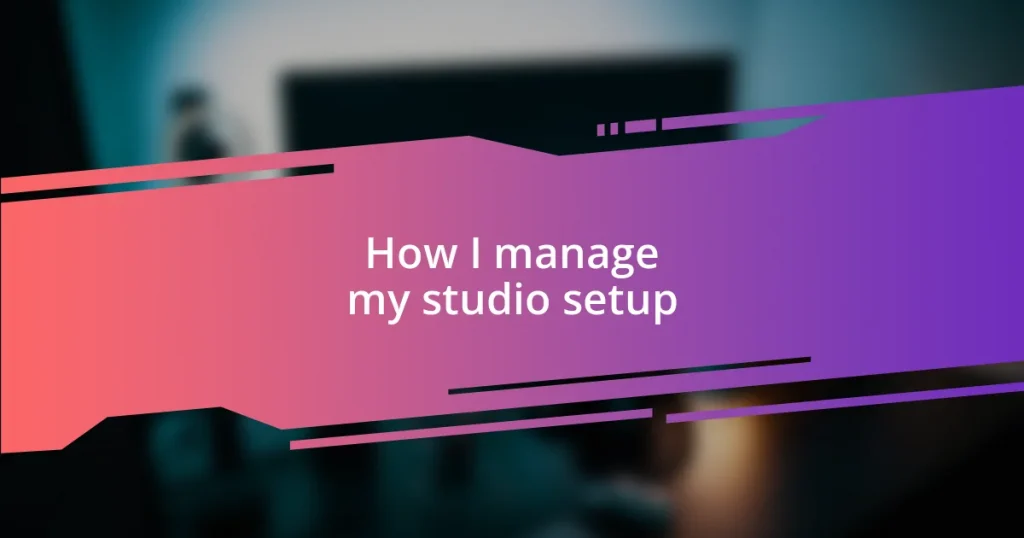Key takeaways:
- Assessing studio needs involves identifying essential tools and evaluating the creative environment, including acoustics, layout, and lighting, to enhance productivity and inspiration.
- Investing in quality equipment, such as studio monitors and audio interfaces, is crucial for achieving clarity in sound and improving the recording process.
- Creating a comfortable atmosphere with personal touches, appropriate lighting, and ergonomic setups can significantly impact creativity and overall workflow in the studio.

Assessing Your Studio Needs
When I first took stock of my studio, I realized I had to determine what I truly needed versus what I simply wanted. Have you ever felt overwhelmed by all the gear on the market? I remember standing amidst cables, monitors, and instruments, asking myself, “What will actually enhance my creative process?” Focusing on my primary goals helped me prioritize essential tools, cutting out distractions.
One of the most revealing moments in assessing my studio needs came when I wrote down everything I used in a typical session. I was surprised to find that I often relied on just a handful of tools to bring my ideas to life. By tracking my workflow, I could clearly identify which items were essential and which ones had become clutter. Have you considered evaluating how often you use your equipment? This simple analysis can provide clarity and direction.
As I continued this assessment, it became evident that the space itself also played a crucial role in my setup. I started thinking about how my environment affected my creativity—lighting, acoustics, and even the layout. I still recall the first time I rearranged my studio, making it more inviting and functional. It was like a breath of fresh air, igniting a spark in my creativity. What changes can you make in your workspace to foster inspiration?
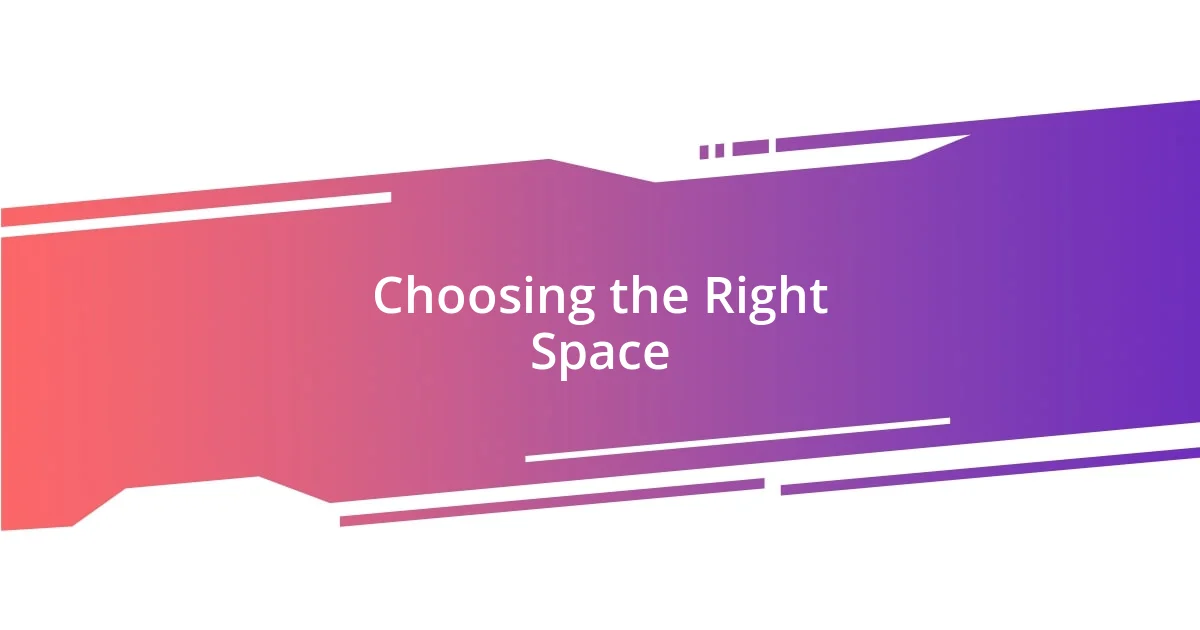
Choosing the Right Space
Choosing the right space for my studio setup has been one of the most pivotal decisions I’ve made. Initially, I made the mistake of thinking any spare room would do. However, after struggling with poor acoustics and an uninspiring atmosphere, it became clear that I needed a space that would truly fuel my creativity. I remember the moment I found a well-lit corner in my home—it transformed how I approached my work. The energy in that space made me want to dive into projects rather than avoid them.
When selecting your studio space, consider these key factors:
– Acoustics: Choose a room with minimal noise interference and a layout that supports sound quality.
– Natural Light: Look for spaces that have ample natural light; it can significantly enhance your mood and productivity.
– Accessibility: Ensure that your main tools and resources are within easy reach to keep your workflow smooth.
– Comfort: A comfortable environment, with the right furniture and temperature, can make long sessions much more enjoyable.
– Inspiration: Surround yourself with items that motivate you—artwork, plants, or even your favorite gear can spark creativity.
Each of these elements has the potential to create an environment that not only supports your work but also inspires you to keep pushing boundaries. I’ve learned that a thoughtful selection of space can lead to breakthroughs, both technically and artistically.
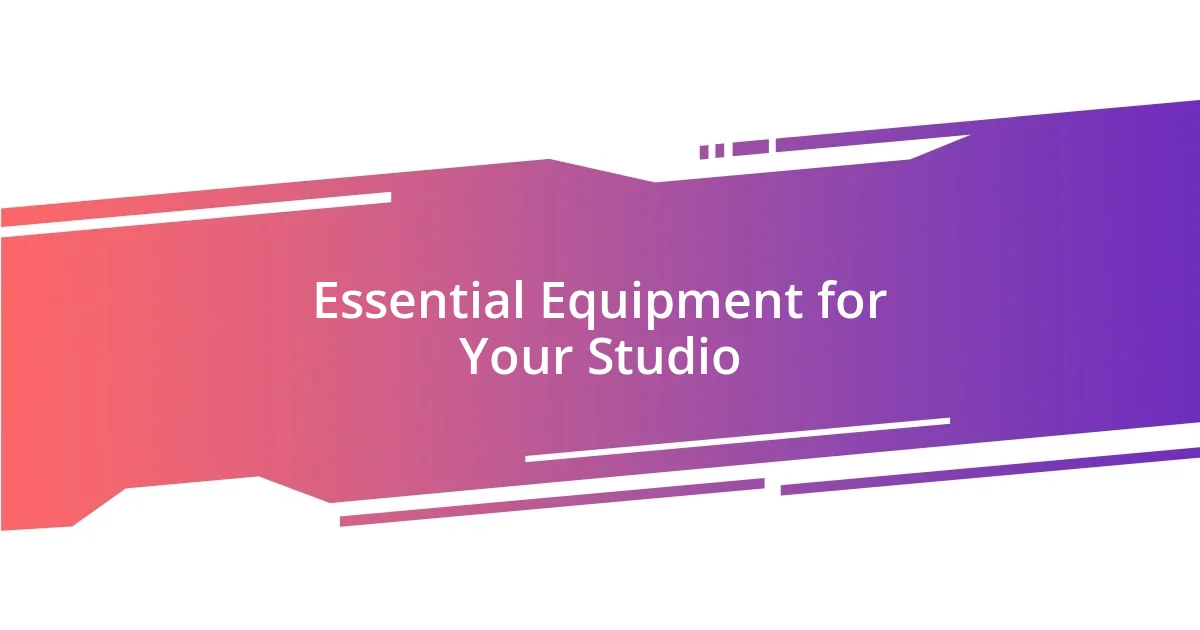
Essential Equipment for Your Studio
When it comes to essential equipment for my studio, I’ve found that quality truly trumps quantity. I began investing in a solid pair of studio monitors, which transformed the clarity of my mixes. It’s amazing how a great set of speakers can make you hear every nuance in your work. I remember the first time I played back a track after upgrading my monitors; it felt like peeling back layers of sound I didn’t even know existed. What equipment are you currently overlooking that could elevate your projects?
Alongside monitors, a reliable audio interface is crucial. I can’t stress enough how much a good interface enhances the recording process. Mine has multiple input options that accommodate everything from microphones to instruments seamlessly. The first time I recorded with it, the difference was tangible; I could capture audio with depth and richness that my previous setup couldn’t provide. Reflecting on your own audio chain, have you considered how significant an interface can be in your workflow?
Don’t overlook the importance of acoustic treatment as well. My studio once echoed like a cave, impacting the accuracy of my work. After installing some sound panels, the environment changed drastically. It’s like the room came alive, allowing me to focus without distractions. Have you explored how you can improve your studio’s acoustics? These adjustments might be simple, but they can profoundly affect your creative output.
| Equipment | Description |
|---|---|
| Studio Monitors | Essential for accurate sound reproduction. |
| Audio Interface | Connects instruments and mics to your computer. |
| Microphones | Vital for capturing vocals and instruments. |
| Acoustic Treatment | Improves sound quality within your studio. |
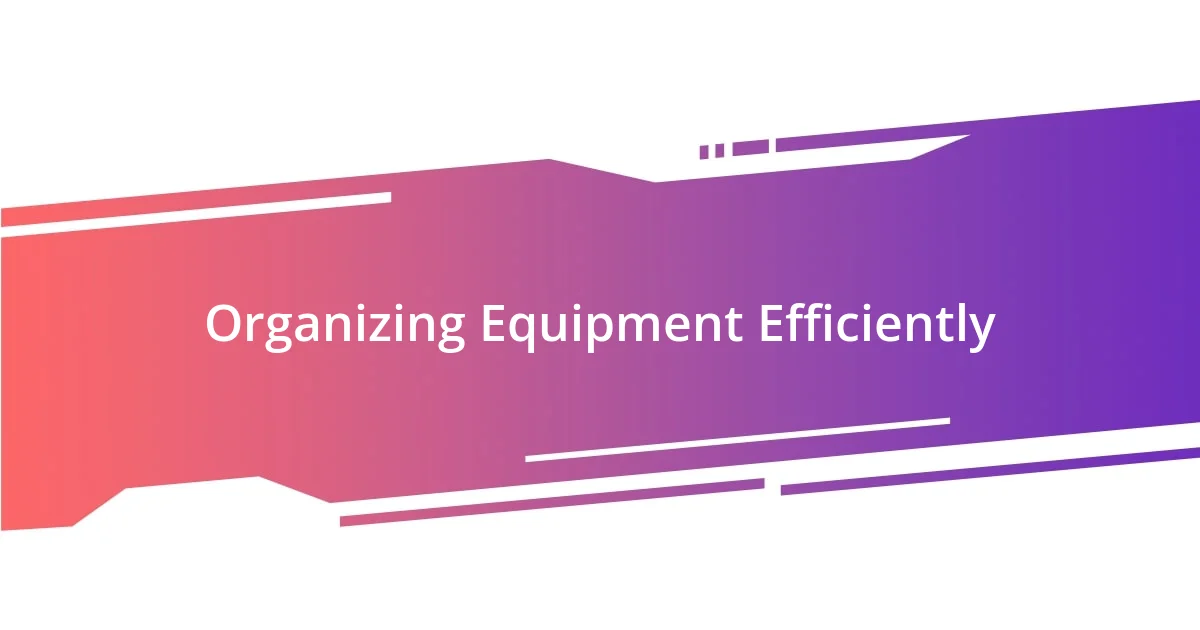
Organizing Equipment Efficiently
When organizing equipment efficiently, I’ve found that everything should have a designated spot. I use labeled shelves and storage bins to categorize my gear. For instance, my cables are neatly coiled and stored in a specific drawer—no more tangled messes! Have you ever spent precious time searching for a cable? It’s frustrating, right?
One game changer for me was investing in a mobile cart. It’s a simple yet effective solution, bringing my frequently-used tools right to my fingertips. I remember wheeling it to my workspace during a crucial recording session—it felt like I had everything I needed in one compact space. It truly enhances my workflow; I can focus on my craft rather than rummaging through clutter. Have you considered how a cart could streamline your setup?
Lastly, I think about ergonomics when arranging my studio. Positioning my monitors at ear level has not only improved my listening experience but also reduced neck strain. I’ve even placed my keyboard and mouse within easy reach, creating a natural flow as I switch tasks. Have you ever experienced discomfort while working? I encourage you to reassess your setup for comfort; it makes all the difference in how productive and happy you feel when creating.

Creating a Comfortable Atmosphere
Creating a cozy studio atmosphere has been a game changer for me. I remember when I first added some warm lighting; it instantly shifted how I felt in the space. Gone were the harsh, sterile vibes; instead, I found a calming environment that sparked my creativity. What’s your lighting like? You might be surprised at how a simple change can elevate your workspace.
Another aspect I cherish is having my space filled with personal touches. I’ve hung up a few framed photos and even my favorite pieces of art. Every time I glance over, those little reminders of inspiration beckon me to dive deeper into my projects. Have you considered curating elements that resonate with you? It can really make a difference in how connected you feel to your work.
Finally, temperature plays a crucial role in my comfort. I’ve learned that my best ideas flow freely when I’m neither too hot nor too cold. Investing in a small fan and keeping a blanket nearby means I can adjust my comfort level quickly. How do you manage your studio climate? It’s amazing how these small adjustments can create a welcoming and productive atmosphere.
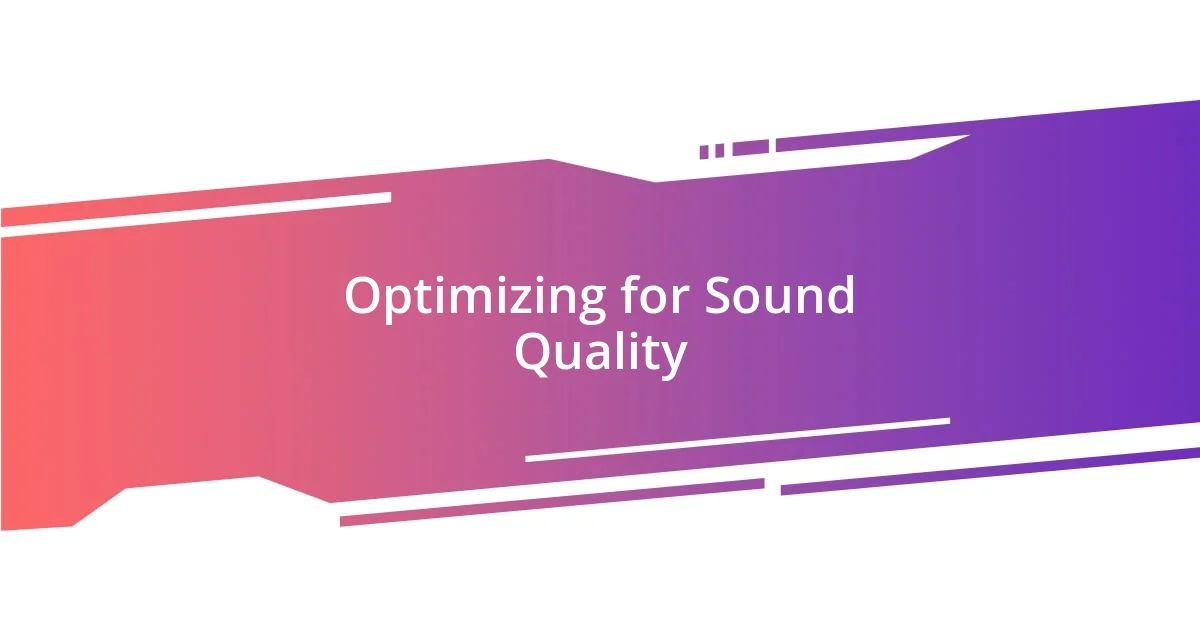
Optimizing for Sound Quality
When it comes to optimizing for sound quality, I always start with my room’s acoustics. Early on, I realized that treating your space can dramatically enhance the overall sound. I remember the first time I installed acoustic panels; the muddiness in my recordings vanished, and the clarity was mind-blowing. Have you ever noticed how a room’s echo can distort your work? It’s worth the investment to fine-tune your environment.
Next, I ensure that my monitors are correctly placed for optimal listening. I’ve learned that having them at the right distance and angle is crucial. The first time I experimented with positioning, it felt like I had opened a whole new world of sound. It’s as if I could pick out each instrument in a mix clearly. What’s your monitor setup like? It might be time for a little adjustment to get the best out of your speakers.
Lastly, I invest in high-quality headphones for those late-night sessions. There are times when I need to work quietly, yet still desire the depth of sound that good gear provides. I recall a late night when a song just wasn’t coming together, but the moment I put on my favorite studio headphones, it was like everything clicked into place. Do you have a reliable pair that you trust? I can’t stress enough how a comfortable, high-performance set can elevate your audio experience.










